Barcode Symbology: What do I Need to Know & Why is it Important?
The first barcode scanner was used in 1974, a year after the introduction of Universal Product Codes (UPC) for retail products. Now barcodes are on virtually every product sold and barcode scanners are fixtures in retail stores, grocery stores, warehouses, logistics companies, and manufacturing facilities across the world. In the past 47 years, barcodes and barcode scanners have developed into a more advanced and complex scanning and reading process. Most people are familiar with barcodes and barcode scanners and feel confident that they could choose the best barcode scanner for their application - but it might be more complex than most people think.
How do barcodes work?
Barcode Scanners read both the black lines and the white spaces in between.
Barcodes are visual representations of data in the form of patterned lines. The most commonly used barcodes, called 1D barcodes, form a numerical code within a pattern of parallel lines with varying widths. Barcodes are generally always black and white because a large contrast exists between how light reacts to the two printed colors, white and black. The black bars absorb light, while the white spaces in between reflect the light back to the light source, in this case, a barcode reader. The black bars can technically be certain shades of blue or green as well, because blue and green appear black under red light. 2*
There are two main types of Barcodes & Barcode Readers.
Barcodes are typically grouped into two groupings - 1D and 2D barcodes.
- 1D Barcodes, also called Linear Barcodes, are black vertical bars of varying widths, with white spaces in between that also vary in size. These barcodes can be scanned with a Barcode Scanner.
- Barcode Scanners use a laser or LED light that takes the reflected light pulses from reading a barcode and converts them into binary code, which is then converted to numbers. The decoded pulses are then sent to a computer or smart device. The numbers that the laser barcode scanner decodes typically correspond with a product’s UPC, or Universal Product Code or a Serial Number. Most normal barcode scanners can only read a barcode at a horizontal angle, but omnidirectional Barcode Scanners are available that use mirrors to pick up barcodes from multiple angles.
- 2D Barcodes have been used since the early 1990’s as a more complex alternative to 1D barcodes with more data options. 2D barcodes are formed from black and white pixels on a square grid in geometric patterns. A 2D barcode must be scanned by a barcode imager in order to read all of the pixels in the respective columns/rows and decode the data.
- Barcode Imagers can typically read both 1D barcodes and 2D barcodes. Barcode Imagers function more like a digital camera in that they take a picture of the barcode and then decode the data from the image. After the sensors take the ‘image’ and process it, the processed data is sent to a computer. 2D barcodes are used for a wide variety of different purposes - from storing UPC codes, importing/exporting data, sharing hyperlinks, to storing important data.
- What each bar width means
- What each space width means
- Where the message starts/stops
- The length of the message
- The size of the quiet zone (area that surrounds the barcode)
- The check digit
Within those two groupings are hundreds of Barcode Symbologies.
‘Barcode Symbologies’ or ‘Symbologies’ might be a new term; however, most people recognize popular symbologies - like QR Codes and UPC barcodes. The term Symbology refers to the actual mapping between messages and barcodes. 1*
Essentially, barcode symbologies are similar to languages, and each symbology has certain specifications that explain how to decode the information. These specifications include information like:
Below is an example of how these pieces fit into the picture:
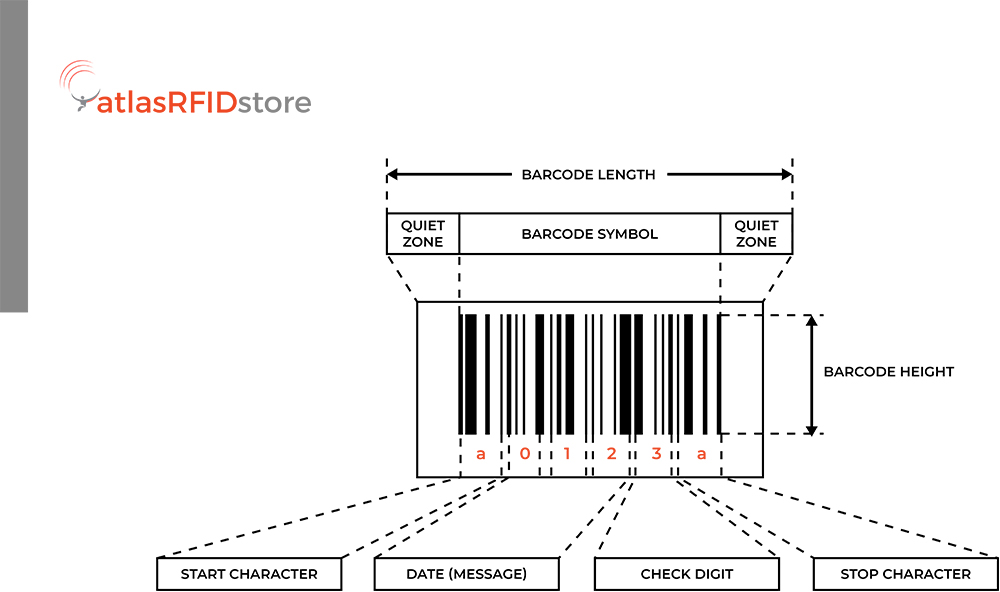
- Are you selling or using products/items that are already labeled with barcodes from a manufacturer?
- In this case, speak to your manufacturers/distributors and ask what type of barcodes they will be sending you and what symbology or barcode standard they are decoded with. At that point, you have determined the correct industry standards and symbologies that you will be reading.
- Are you creating an entirely new product/item and need to make your own barcodes and read them?
- In this case, research your industry through GS1 to see what the typical barcode standard and symbology are for the industry. Take a look at the “10 Steps to Barcode Your Product” downloadable provided by GS1. At that point, you have determined the correct industry standard and symbology that you will be reading.
Even though people typically think of a horizontal square barcode or ‘1D barcode’ when they think ‘Barcode’, but there are several different types or symbologies seen every day.
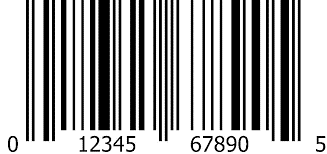
UPS Barcode Above
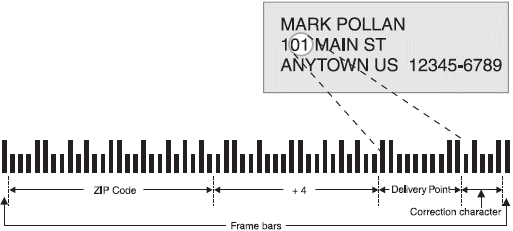
USPS Barcode Above
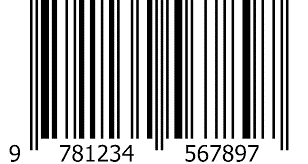
ISBN Barcode Above
The most common type of Barcode Symbology is UPC-E.
UPC-E is one of the most common types of barcodes used because it is based on Universal Product Codes. UPC-E is the condensed version of UPC-A, which means that it is used on products with less space available for a barcode. UPC-E has 6 characters, while the non-condensed version (UPC-A) has 12 characters. Below is an example of UPC-E and UPC-A.
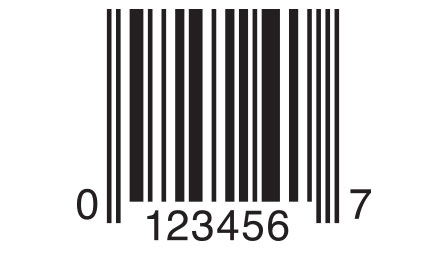
UPC-E Above, UPC-A Below
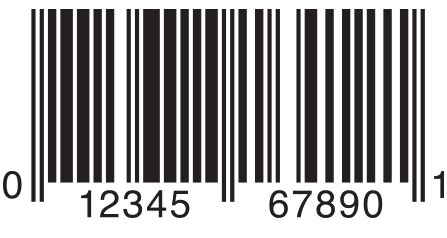
Below is a list of some of the most common Barcode Symbologies and what they are used for.

The type of Barcode and Symbology your application uses is generally determined by an industry standard.
In order to provide a seamless identification experience across industries, GS1, the Global Standards Organization, works with individual industries to create one regulated barcode standard. GS1 creates industry standards for RFID tags, and many other business communication standards to help ensure that global industries are more efficient and effective. Most industries work with GS1 and determine that the best course of action is to adopt a pre-existing standard, while other industries decide to create a custom, unique barcode standard. Below are the same barcode symbologies and use case examples shown above; however, the chart below includes the adopted industry standard. 4*

Take a look at GS1’s core barcode standards and common-use barcodes on GS1’s website, and download the PDF to learn more. (https://www.gs1.org/standards/barcodes-epcrfid-id-keys/gs1-general-specifications)
Not all Barcode Scanners/Imagers can read all Barcode Symbologies.
Above, we used the comparison that Barcode Symbologies are similar to languages, and in that same respect, Barcode Scanners/Imagers are similar to digital translators. All Barcode Scanners, similar to digital translators, cannot read and decode all Barcode Symbologies – you have to pick the correct language.
Ultimately, choosing the best barcode reader for your application can be done by knowing as much as possible about the barcodes you will be scanning. The next steps vary depending on:
After you have determined the industry standard and/or Symbology used, most Barcode Readers have a list of supported symbologies either on the product details, or in the individual data pages.
Conclusion
For more information on Barcode Symbology and Barcode Readers – comment below or contact us. To checkout a comparison guide of Wearable Barcode Scanners and the Symbologies they can decode, checkout the link below.
• Wearable Barcode Scanner Comparison Guide
*1 - https://en.wikipedia.org/wiki/Barcode#Symbologies
*2 - http://www.barcodeadvice.org/barcodefaq.html
